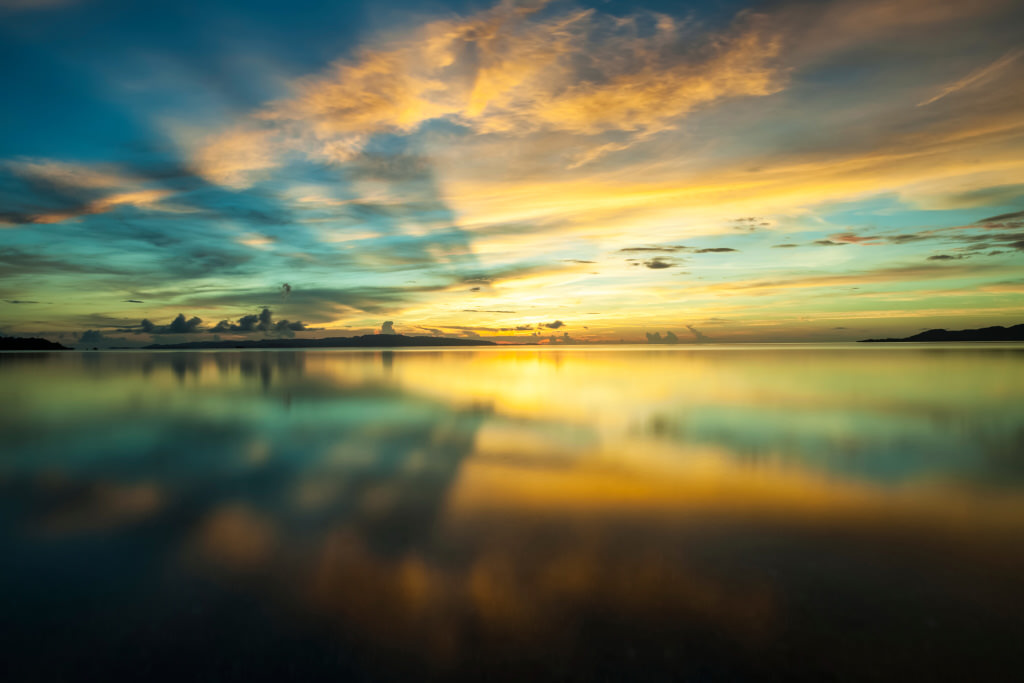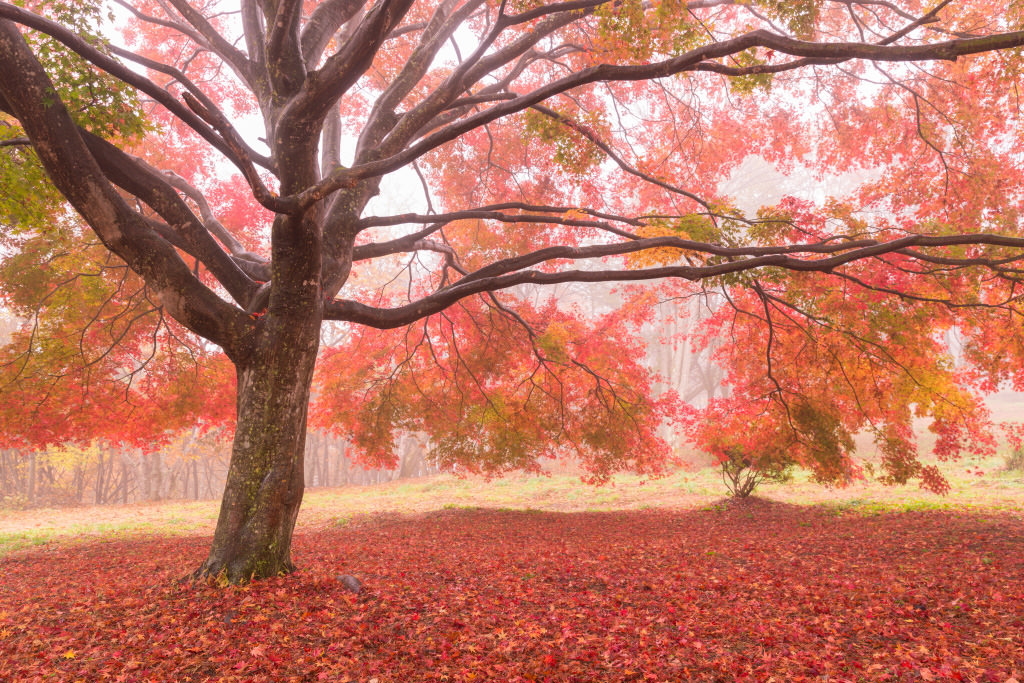To landscape photographer Jiro Tateno, the EF24-70mm f/2.8L II USM is one lens he never leaves home without. He tells us why, and shows us some of the beautiful scenes that he captured with this standard zoom lens. (Reported by: Jiro Tateno)

The zoom that helps me photograph nature even in tight spaces
When I started getting serious about photography, the first lens I bought was a standard zoom lens, which would provide pictures with an angle of view close to that of the human eye. Even though I have changed my camera since then, a standard zoom lens has always been an indispensable part of my arsenal. This is because I mainly shoot natural landscapes, and feel that it is essential to have a lens that can zoom as well as cover a standard focal range.
The zoom capability probably would not be as important if I could shift my shooting position at will. However, when I am out in nature, I often have limited space to work with—there could be danger under foot, or I might be in a situation where I am unable to get up closer or step back as I would like. I have had several frustrating experiences where I was unable to achieve the angle of view that I wanted with a prime lens. In that respect, a lens than can zoom enables me to make small adjustments to achieve my ideal composition, even if I have limited leg room.
Among the lenses I have, the EF24-70mm f/2.8L II USM is the one that I use most often, and which I find the most reliable.

EOS 5D Mark III/ EF24-70mm f/2.8L II USM/ FL: 41mm/ Manual exposure (f/11, 1/60 sec)/ ISO 100/ WB: Daylight
This shot was taken one spring when I visited Mount Yoshino about 3 days after the sakura were in full-bloom. In fact, the sakura blossoms had already begun to fall, and every gust of wind that blew through the trees and scattered even more petals was a moment that struck deep into my heart. I found a good spot and watched such moments happen again and again for a very long time.
Get some ideas on where and how to photograph sakura here:
Photographing Sakura in Japan: Part 1, Part 2, Part 3
How to Capture Detailed but Dreamy-Looking Cherry Blossoms With a Soft Filter
Lens’ versatility a bonus for shoots involving long hikes and climbing mountains
In my opinion, the lens’ angle of view of 24 to 70mm is most effective for photographing not just landscapes, but also people. It enables you to handle a wide variety of situations: The wide-angle range is great for shooting expansive landscapes as well as close-up shots of subjects such as trees and rocks, whereas with the medium telephoto range all the way to 70mm, you can take close-up shots of flowers or other subjects from a slight distance. I have often completed entire shoots using just this one lens.
When I previously did a shoot while climbing up Mount Yoko in the Yatsugatake Mountains in central Japan, I prepared myself for any situation, taking 4 or 5 lenses with me. In the end, though, I came down from the mountain having only used the EF24-70mm f/2.8L II USM. Since then, when going on shoots that involve mountain-climbing or walking long distances, I usually carry this lens as my main lens, and just one or two other lenses.

EOS 5D Mark III/ EF24-70mm f/2.8L II USM/ FL: 24mm/ Manual exposure (f/13, 30 sec) / ISO 100/ WB: Daylight
After sunset, the clouds gradually begin to change colour, with beautiful gradations spreading across the sky. I wanted to capture the reflection of this sky on the surface of the sea, so I took this shot using an ND filter and a graduated ND filter.
Satisfying colour production, superbly sharp image resolution
When it comes to performance, this lens is faultless. I was using the previous EF24-70mm lens model, and the colour production and sharp images it provided were satisfying enough, but with this series II model, it feels that the entire lens has been further refined all over.
When I shot with deep focus, the lens captured superb images that were sharp from the foreground through to the background and right to the periphery of the angle of view. Even images for which I made the most of the bokeh effect were captured as I had envisioned. The image quality extends to when you photograph starry skies—make use of the bright, f/2.8 maximum aperture, and the lens will help you to capture the countless stars. You can also use this lens with peace of mind if you want to take backlit shots that include the sun in the frame.

EOS 5D Mark III/ EF24-70mm f/2.8L II USM/ FL: 24mm/ Manual exposure (f/8, 1/2 sec)/ ISO 100/ WB: Daylight
This shot of a maple tree with autumn leaves was taken in light rain. While I was shooting, the rain suddenly became heavy so I took shelter under the nearby tree. The scene, filled with autumnal colours with red leaves scattered on the ground, was so mesmerizing that even after the rain stopped, I lingered around the area.
A reliable partner I can’t imagine being without
A lens this reliable is a reassuring partner for a photographer. I foresee that even in the future, there will still be situations where this lens alone can come to my rescue, expressing images honestly, in the way that I am seeking.
These days, I cannot imagine going out without this lens. If someone were to ask me which lens I would choose if I was only allowed to carry one lens, I would choose this lens without hesitation. This is how much the EF24-70mm f/2.8L II USM means to me.

EOS 5D Mark III/ EF24-70mm f/2.8L II USM/ FL: 47mm/ Manual exposure (f/13, 1/5 sec)/ ISO 100/ WB: Daylight
The night before I shot this image, I had watched the silent, falling snow and gone to bed in anticipation of waking up to a beautiful white scene. This was what greeted me when I woke up and looked outside the next morning. It was more beautiful than what I had imagined.

EF24-70mm f/2.8L II USM
Lens configuration: 18 elements in 13 groups
Number of aperture blades: 9
Minimum aperture: f/22
Minimum shooting distance: 0.21m
Filter diameter: φ82mm
External dimensions: Approx. φ88.5x113.0mm
Weight: Approx. 805g
Receive the latest update on photography news, tips and tricks.
Be part of the SNAPSHOT Community.
Sign Up Now!
About the Author
A monthly magazine that believes that enjoyment of photography will increase the more one learns about camera functions. It delivers news on the latest cameras and features and regularly introduces various photography techniques.
Published by Impress Corporation
Born in Tokyo in 1975. From around 1990, he came into contact with nature through fly fishing, and took up photography. From 1999, he travelled around the country taking photos with the theme of "Natural Beauty". He currently supplies photos for magazines, books, posters, calendars, and so on. He held an "Okinawa" photo exhibition in 2010, and "Northern Lights - Journey of Light/ Iceland" photo exhibition in 2017.


































